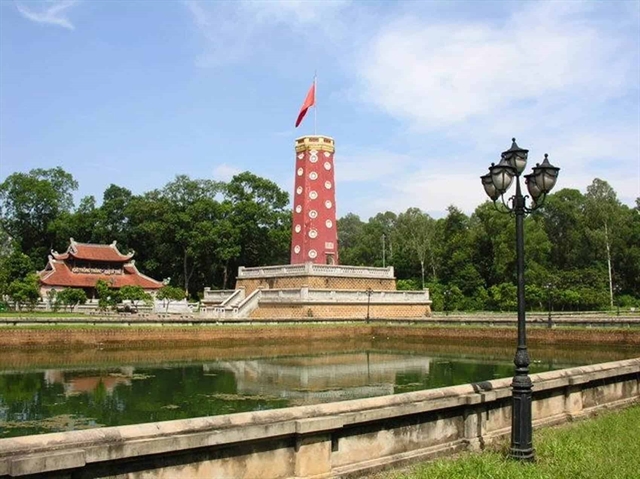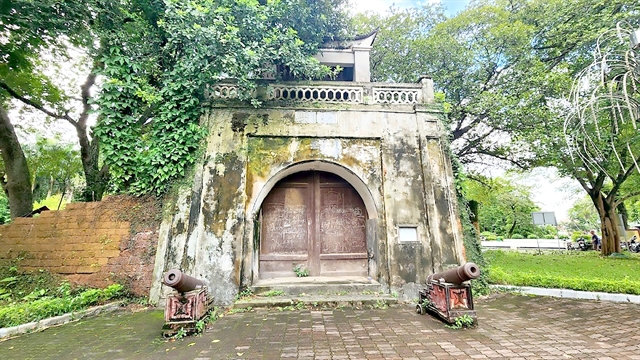Archeological excavation starts on Hà Nội's Sơn Tây ancient citadel
![]() 03/10/2023
03/10/2023

At the entrance of the citadel is Ngọc Well and the 30m-high watchtower, where the national flag now hangs. Photo hanoimoi.vn
HÀ NỘI The Ministry of Culture, Sports and Tourism (Culture Ministry) has given the nod to the Hà Nội Museum in coordination with the Institute of Archaeology to conduct the first phase of exploration and excavation on the capital city's Sơn Tây Ancient Citadel.
The ancient historical relic, located in the centre of Sơn Tây Town, about 40km from Hà Nội, was built in 1822 during the reign of Emperor Minh Mạng (1791-1841) under the Nguyễn dynasty.
Though it was among 20 citadels built in the Nguyễn dynasty, the Sơn Tây citadel was the only one built entirely of laterite, a good material for defensive building that is available locally.
According to the Hà Nội Museum, the exploration and excavation will take place from September 15 to October 30 on a total area of 120sq.m, specifically focusing on three sites: the Bố Chánh Phủ (Administration Commissioner Palace), Án Sát Phủ (Surveillance Commissioner Palace) and the Cổng Đông (East Gate).
Each site will have a total exploration area of 20sq.m divided into four holes of 5sq.m each.
The work will also be carried out on the site of the Tổng Đốc Phủ (Governor's Palace) with an area of 60sq.m divided into three holes of 20sq.m each.
The culture ministry has asked that during archaeological works, authorities and agencies which have been licensed to conduct the excavation should pay attention to protecting the relic's stratigraphy and are responsible for publicising to locals about the importance of cultural heritage protection.

This photo shows one the citadel gate. The heritage site contains many vestiges reflecting the Vietnamese people's indomitable struggle, loyalty and resilience in the fight against foreign invaders. Photo nguoihanoi.vn
For artefacts collected during archaeological exploration and excavation, it stated that the Management Board of Đường Lâm Ancient Village and Sơn Tây Ancient Citadel is responsible for preserving artefacts from being damaged or lost.
According to the book Thành Cổ Sơn Tây (Sơn Tây Ancient Citadel) by the Sơn Tây authorities, Sơn Tây used to be one of the four major townships defending Thăng Long (former name of Hà Nội), located to the west of the royal capital city.
Also known as Đoài Land and considered a sacred land with extraordinary people, Sơn Tây boasts a rich history and culture.
The locality, part of the lands protecting the ancient citadel as well as present-day Hà Nội, has always held strategic and military importance.
The site contains many vestiges reflecting the Vietnamese people's indomitable spirit, loyalty, and resilience in battles against foreign invaders.
Through many challenges, the citadel has preserved its vestiges, showcasing the construction techniques of defensive military works in Việt Nam's North.
With its longstanding and unique historical and cultural values, it has become a destination for students to visit and learn about patriotic traditions and heritage preservation.
The old citadel today impresses visitors with its tranquillity.
The conservation of the citadel has received significant investment from the state and support from the local people
The Sơn Tây Ancient Citadel has been recognised as a National Historical and Cultural Heritage site since 1994. VNS





